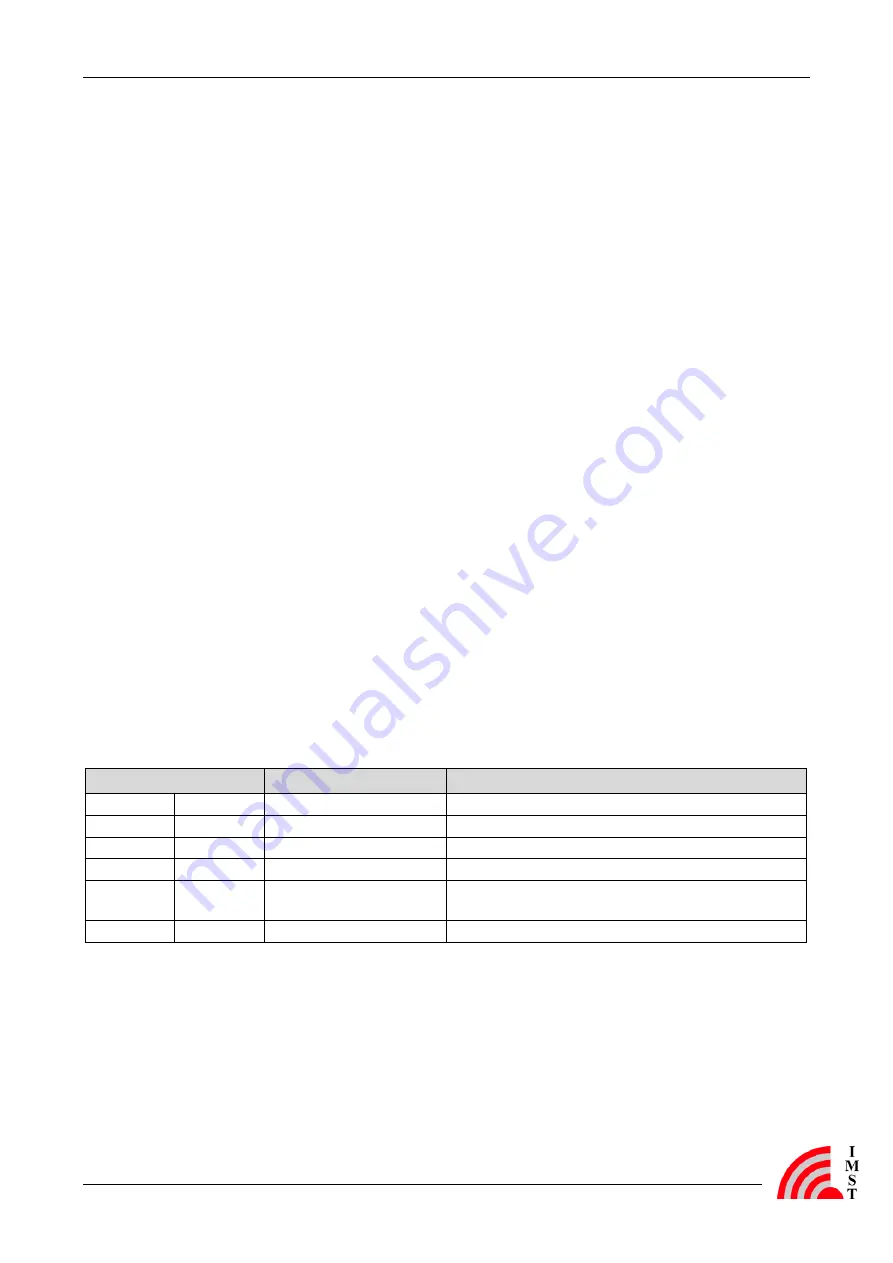
User Guide
WiMOD - Demo Board
Functional Overview
DemoBoard_UserGuide.doc, Wireless Solutions, V2.4
page 7 of 23
2.2
USB Interface
The USB interface of the Demo Board can be used for communication between the attached
radio module and a PC. The USB controller (FT232RQ) is turned on once the connection to a
PC is established. This is also signalized by LED 5. The USB interface supports ”USB 1.1“ and
“USB 2.0 full speed“ modes.
The UART interface (TxD, RxD, /CTS, /RTS, /DSR, /DTR, /Ri) of the used USB controller is
available on I/O connector 3 (see chapter 3.2).
Before the USB interface can be used for the first time, the desired hardware driver for the USB
controller must be installed on the PC. If the PC will detect the Demo Board as new hardware
please follow the given instructions to install the new virtual COM port.
For more information see the corresponding website from FTDI [1].
2.3
User Interface
The user interface of the Demo Board provides the following functionalities. Most of them are
available on the I/O connectors (see chapter 3.2).
-
USB interface for a serial communication
-
LEDs and a buzzer for signal indication
-
Buttons and switches for user interaction
-
Potentiometer as analog input signal
-
Temperature sensor with I²C interface
The Demo Board has six LEDs to indicate a status or an event. Table 2-1 explains the LEDs and
to which connector they are connected to.
LED
Available on
Description
D1
red
X5.17 ; X5.19
Useable by the attached radio module.
D2
yellow
X6.3
Useable by the attached radio module.
D3
green
X6.5
Useable by the attached radio module.
D4
orange
X6.7
Useable by the attached radio module.
D5
blue
-
USB status LED, indicating an established USB
connection to a PC.
D6
green
-
Power status LED, indicating when power is switched on
Table 2-1: Connections of the LEDs
LED D5 is turned on if a USB connection to a PC is established. LED D6 indicates the power
supply status. The LEDs D1 to D4 can be connected to the attached radio module by using
jumpers or connecting cables on the I/O connector. They are switched on by a high level signal.
The Demo Board has one sliding switch, four push buttons and two DIP switches. Table 2-2
highlights the functions of these switches and buttons and their availabilities.








































